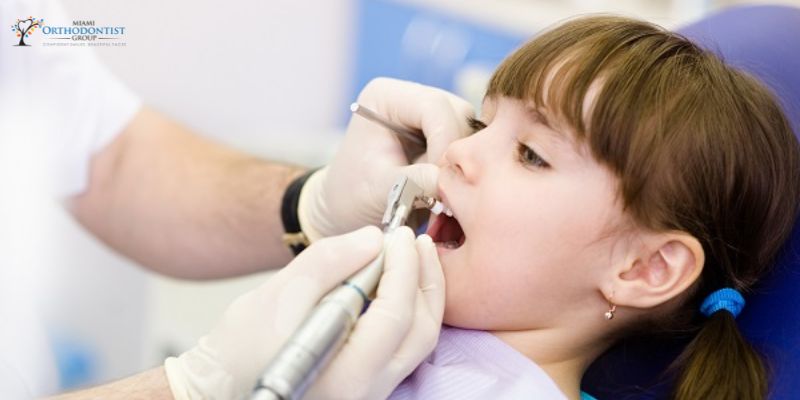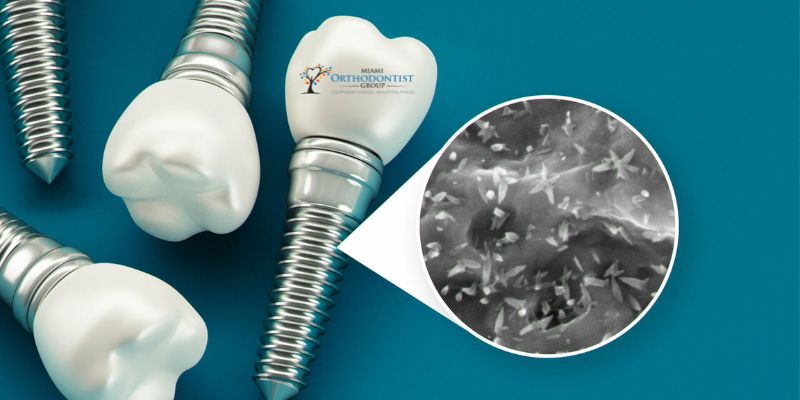
Nanotechnology is a field of science that studies particles at the nanometer scale. Nanoparticles are tiny, measuring less than 100 nm in size. Over the past few decades, researchers have made significant progress in developing nanotechnology and its application in various fields, including medicine and dentistry.
Dentistry, like any other field of medicine, has significantly benefited from advances in nanotechnology. Nanoparticles are used in various dental applications, from dental implants to drug delivery systems. This article will discuss the emerging trend and application of nanotechnology in dentistry.
Nanotechnology in Dental Implants
A standard solution for replacing missing teeth is dental implants. They are surgically inserted into the jawbone and manufactured from biocompatible materials like titanium. However, the ability of the implant to fuse with the surrounding bone tissue determines whether dental implants will be successful.
Nanotechnology allows dental implants to blend in with the surrounding tissue. The implant surface is given a rough texture using nanoparticles, encouraging greater bone tissue integration. The success of dental implants depends on a process known as osseointegration.
Nanotechnology in Dental Restorations
Dental restorations, such as crowns and fillings, are used to repair the structure and functionality of teeth that have been broken or decayed. To increase the strength and endurance of dental restorations, nanoparticles are utilized. Nanoparticles are added to strengthen the bond between the restorative material and the tooth structure.
Dental composites, which are tooth-colored fillings used to repair cavities, also contain nanoparticles.
Dental composites gain strength and see a decrease in fracture risk thanks to the incorporation of nanoparticles. Dental composites look more realistic thanks to the aesthetic improvements made by nanoparticles.
Nanotechnology in Oral Cancer Diagnosis
Oral cancer is a dangerous condition that could be fatal. For good treatment outcomes, early diagnosis is essential. The diagnosis of oral cancer could be entirely changed by nanotechnology. An oral cancer diagnosis is a crucial application of nanotechnology in dentistry.
It is possible to create biosensors that use nanoparticles to find cancer biomarkers in blood or saliva samples. These biosensors are very capable of early cancer detection and have a high sensitivity. Early detection and better treatment outcomes may result from using biosensors in diagnosing oral cancer.
Nanotechnology in Drug Delivery
Dentistry has a crucial component called drug delivery. Targeted drug delivery systems for the mouth can be created using nanoparticles. These drug delivery systems can administer drugs to the gums, teeth, and surrounding tissue.
Nanoparticles can be employed to increase the potency of currently available medications. Nanoparticle-encapsulated medications are more potent than their free form and have a longer half-life. Additionally, nanoparticles can increase a drug’s bioavailability and shield it from deterioration.
Nanotechnology in Oral Health
Nanoparticles can be used to treat and prevent oral infections, hence enhancing oral health. Using nanoparticles, antimicrobial compounds can be created to eradicate viruses and bacteria in the mouth. These antibacterial substances are powerful and can stop oral infections from occurring.
Additionally, nanoparticles can create oral hygiene products like toothpaste and mouthwash. By enhancing their capacity to remove plaque and stop the onset of oral infections, nanoparticles can boost the efficacy of these products.
Nanotechnology in Pediatric Dentistry

Pediatric dentistry is only one of many areas of dentistry where nanotechnology has demonstrated significant promise. By enhancing treatment outcomes and patient comfort, pediatric dentistry can make dental procedures less frightening for kids. Here are some potential applications of nanotechnology in pediatric dentistry:
Prevention and treatment of dental caries: Dental caries (tooth decay) are among the most common chronic childhood diseases. Nanotechnology-based products, such as nano-hydroxyapatite and silver nanoparticles, can prevent and treat dental caries. Nano-hydroxyapatite can remineralize damaged enamel and prevent further decay, while silver nanoparticles can kill bacteria that cause cavities.
Orthodontic treatment: Nanoparticles can be used to develop orthodontic materials that are more comfortable and efficient. For example, nanoparticles can be incorporated into orthodontic wires and brackets to reduce friction and improve sliding mechanics.
Diagnosis of oral diseases: Nanoparticles can be used to develop diagnostic tools to detect oral diseases early. For example, gold nanoparticles can be used to detect oral cancer cells, while quantum dots can be used to detect bacteria that cause periodontal disease.
Treatment of dental anxiety: Dental anxiety is common in children and can make dental procedures more challenging. Nanotechnology-based products, such as local anesthesia nanoparticles, can reduce the pain and discomfort associated with dental procedures, making them less intimidating for children.
Future Directions in Nanotechnology in Dentistry
Although much is still to learn about nanotechnology in dentistry, it has demonstrated great promise. The development of new applications and enhancing the safety and effectiveness of nanotechnology-based products will be the main goals of future research in the field of dentistry.
The creation of intelligent dental materials is one field of research. When the oral environments changes, such as pH or temperature, these materials can react by releasing medication or antimicrobial agents as necessary. The efficacy of dental restorations can be increased, and oral infections can be prevented and treated using this technology.
The application of nanotechnology to regenerative dentistry is another field of investigation. To restore lost or injured dental tissue, nanoparticles can be employed to induce the creation of new tissue and bone. This technology can create new treatments for periodontal disease and other disorders that impact dental tissue.
Additionally, nanotechnology in dental materials can be improved for better tissue integration. The lifetime and success rate of dental procedures can be increased using nanoparticles to make contact between dental material and the surrounding tissue seem more natural.
Conclusion
Nanotechnology has emerged as a promising trend in dentistry, with vast potential applications in dental implants, restorations, drug delivery, oral cancer diagnosis, and oral health. Nanoparticles can improve dental treatments’ safety, efficacy, and longevity, leading to improved patient outcomes and dental health.


